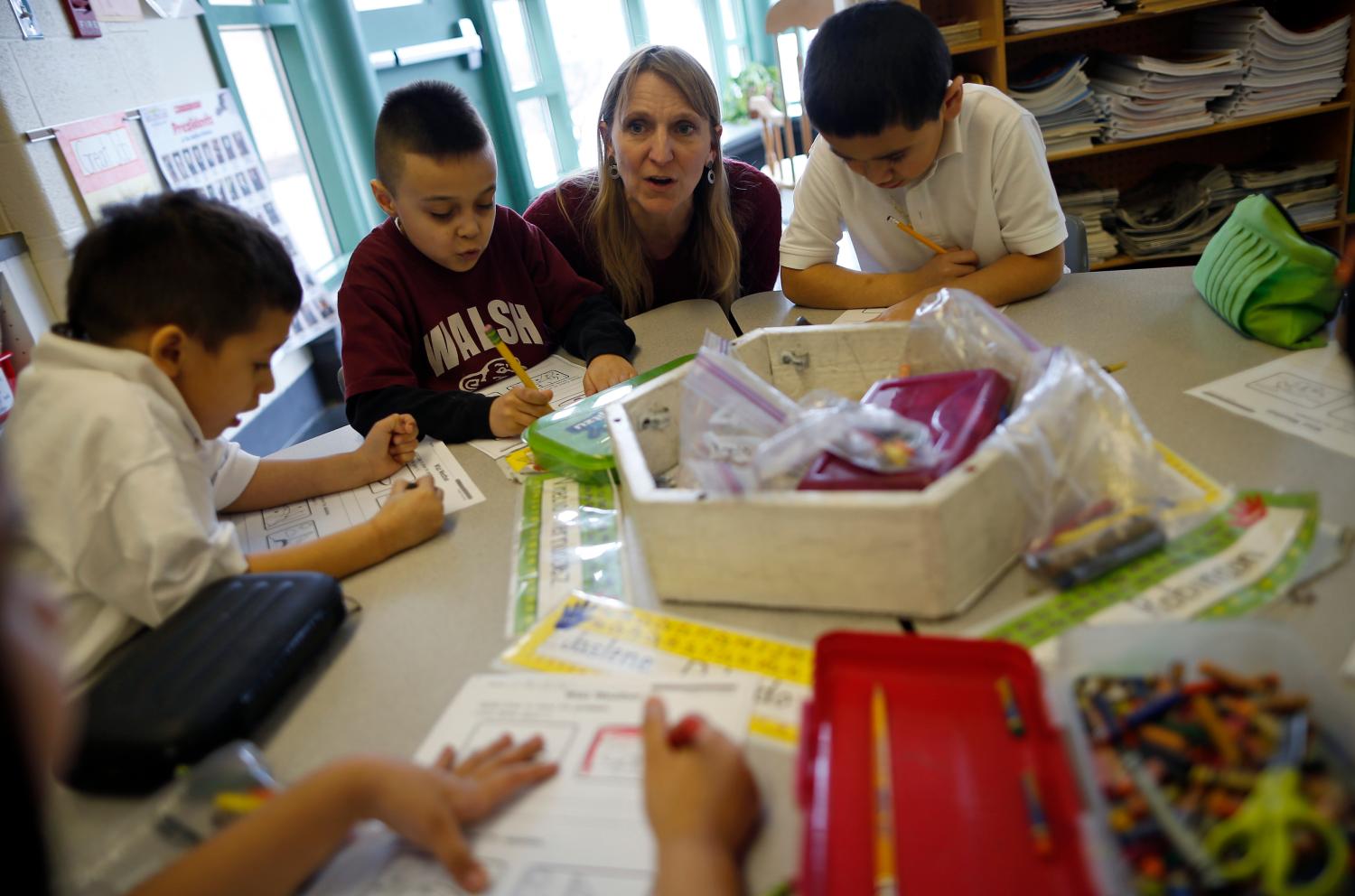Author Gerard Robinson participated as a panelist on the June 8 Brown Center event on education disparities. This piece dives deeper into some of the issues explored during the event.
Disparities in America are real, and the laundry list of liabilities they leave behind is long. An example includes childhood obesity rates that have skyrocketed since 1980 among households with families living in poverty. Out-of-school suspension rates for black and Hispanic students have skyrocketed as well. A recent poll conducted by YouGov and Pathways in Education illustrates another disparity: parental expectations. The survey asked parents across the country “Do you feel that students of color are afforded the same education opportunities as their peers?” Fully 81 percent of white respondents said yes, versus only 43 percent of black respondents. Data from the federal Department of Education’s Office of Civil Rights supports black parents’ opinion. For instance, whereas approximately 50 percent of black students attend schools that offer a full range of math and science courses (including algebra, biology, calculus, and chemistry), more than 70 percent of white students have access to these courses.
Chief among our disparity narratives is the white-nonwhite achievement gap, which is code for white-black-and-Hispanic (Native Americans typically are ignored in these comparisons, unfortunately). Scholars and reformers are very familiar with National Assessment of Education Progress (NAEP) data that prove this historical gap exists.
NAEP National Average Math Score on 8th Grade Math
| White | Black | W/B Gap | Hispanic | W/H Gap | |
| 2015 | 292 | 260 | -32 | 270 | -22 |
| 2005 | 289 | 255 | -34 | 262 | -27 |
| 1992 | 277 | 237 | -40 | 249 | -28 |
NAEP National Average Reading Score on 8th Grade Math
| White | Black | W/B Gap | Hispanic | W/H Gap | |
| 2015 | 274 | 248 | -26 | 253 | -21 |
| 2005 | 271 | 243 | -28 | 246 | -25 |
| 1992 | 267 | 237 | -30 | 241 | -26 |
Academic inquiries into the root causes of the white-nonwhite phenomenon are not new. In 1966, James Coleman and colleagues concluded that socioeconomic status mattered to student achievement. One year earlier Patrick Moynihan concluded that the status of the nuclear family—or the lack thereof—is the culprit for social and economic disparities in the United States. In modern times, Richard Reeves, Isabel Sawhill, and Kimberly Howardremind us that the parenting gap—how affluent parents smartly invest monetary and intellectual capital into their child’s education compared to lower-income parents—matters to student achievement, too.By comparison, Bob Doar believes that the “other” parenting gap—not having a two-parent home—is a big factor. And as Erick Hanushek and Kirabo Jackson debate the economics of how money matters to education, Linda Darling-Hammond explains why teacher quality is important.
Yet our fascination with white-black-and-Hispanic disparities too often overlooks a salient and, more importantly, nuanced achievement gap existing at the top of the learning chain: a white-nonwhite achievement gap that is impolite code for white-and-everyone-else-except-Asian. A select number of scholars and reformers know about the empirical evidence; most of us do not. Typically, the national standard for explaining academic disparities to the American public rarely includes Asian students in the narrative. Why? White student achievement historically has served as the pinnacle of excellence and the measure by which we judge other people’s children. Therefore, we reflexively overlook the superior performance of some Asians over whites.
However, a few points from NAEP illustrate that the Asian-white gap is real and not new.
NAEP National Average Math Score on 8th Grade Math
| Asian | White | Gap | |
| 2015 | 306 | 292 | -14 |
| 2005 | 295 | 289 | -6 |
| 1992 | 290 | 277 | -13 |
NAEP National Average Reading Score on 8th Grade Math
| Asian | White | Gap | |
| 2015 | 280 | 274 | -6 |
| 2005 | 271 | 271 | 0 |
| 1992 | 268 | 267 | -1 |
Asians outperformed whites on the SAT as well. For instance, white students’ math and writing SAT scores were 64- and18-points lower than Asians in 2015. In fact the combined SAT score of 1654 for Asians in 2015 saw a 54-point increase since 2006. Whites and others saw a decline during the same time. Regarding AP exams, 72 percent of Asians earned at least one 3 score compared to 66 percent of whites in 2014. As a side note, an Asian-white achievement gap exists for adults, too:53.9 percent of Asians have a bachelor’s degree or higher compared to only 36.2 percent of whites.
Academic inquiries in the Asian-white achievement gap abound. Jennifer Lee and Min Zhou identify educated immigrant parents as one factor giving their children an advantage over U.S.-born whites . Amy Hsin and Yu Xie concluded that the “Asian-American educational advantage” results from a culture of academic effort, not cognitive or socioeconomic advantages. Nathan Joo, Richard Reeves, and Edward Rodrigue believe Asians do better, in part, because they live in areas with better schools, nearly on par with whites. Nevertheless, the authors note that not all Asians are performing better than whites.
For example, 79 percent of Koreans and 76 percent of Japanese eighth graders scored proficient on the California Algebra I test compared to 39 percent of whites and 35 percent of Laotians and Cambodians in 2010. These results confirm one important finding in a 2008 report from C.A.R.E. and the College Board: Asians are not a monolith “miracle minority” group.
Many Asian students struggle in ELL, reading, and math classes, including some from higher-income households. In regard to an intraAsian dynamic, Hmong, Tongan, and Vietnamese populations, for example, are among the most poorly educated communities in the United States—not just within the Asian community. In fact, some black and Hispanic students outperform these populations as well as some higher-achieving Asian students.
Our national reform conversations to address the achievement gap rarely target Asian or white students. One reason is because our philanthropic appetite to address systemic disparities caused by poverty, homogeneous neighborhoods, or school segregation rarely targets Asians students. Another is a left-of-center social justice—or a social just us (black and Hispanic)—narrative that does not address the needs of poor and working-class white students who are struggling in schools, too. Either way, we need to expand the disparity narrative to include all students if we want to undertake an effective effort to address the achievement gap in the United States.
So, were do we go from here?
We can begin this journey by accepting two themes as valid. Poverty is not a proxy for destiny. Nor is ethnicity a predicate for scholastic superiority. Next, if we must use public schools as a petri dish for social engineering, then an investigation of Asian-white or intraracial disparities will shed new light on solutions that white-black-Hispanic or interracial disparities have failed to accomplish, and not always from lack of good intent or policies. In particular, we can obtain a unique glimpse into class, language, and culture dynamics we gloss over by a race-only view. By doing so we can begin to wash away some stains from our laundry list of liabilities in the United States.
The Brookings Institution is committed to quality, independence, and impact.
We are supported by a diverse array of funders. In line with our values and policies, each Brookings publication represents the sole views of its author(s).





